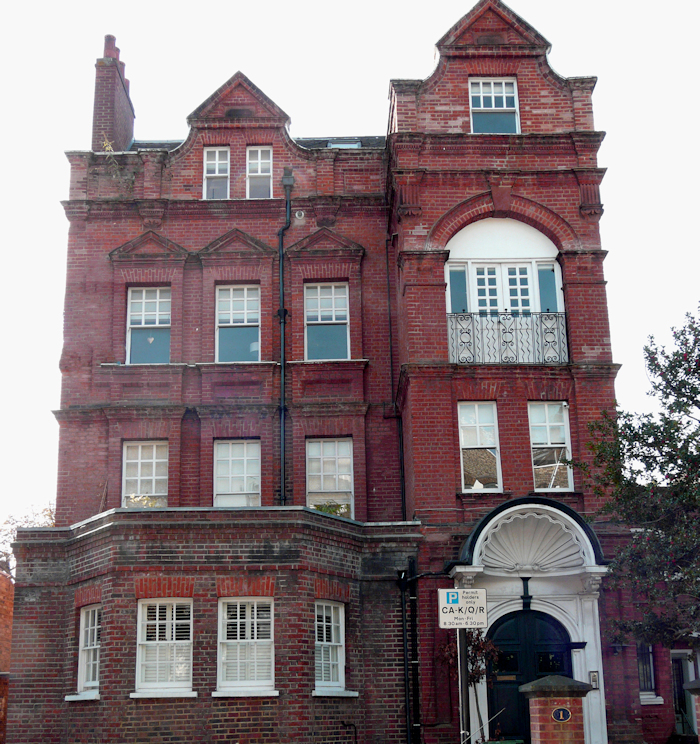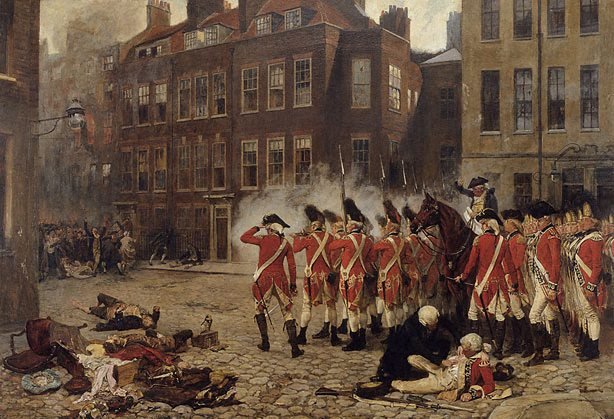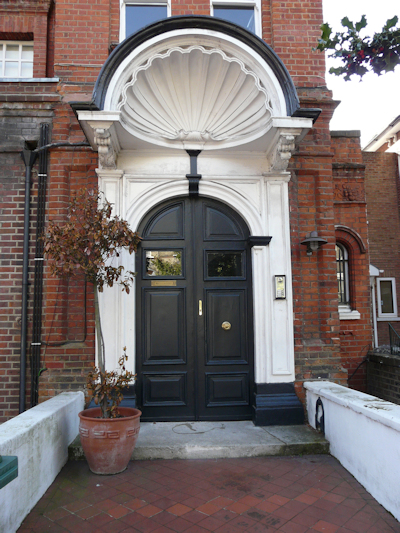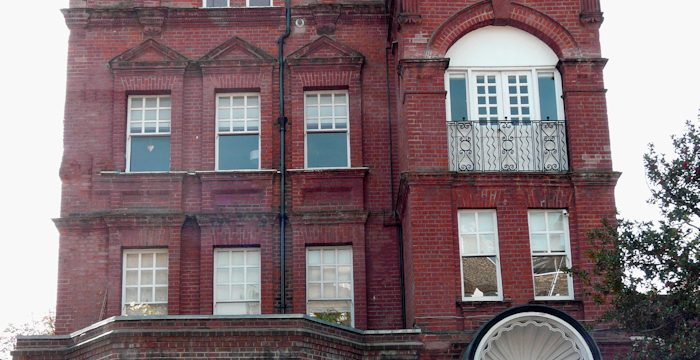The improbable history of 1 Woodchurch Road

No. 1 Woodchurch Road in October 2016
No. 1 Woodchurch Road – the rather grandiose building towards the Priory Road end of the street – was for many years called ‘New Place’ and has been the home of several famous residents. Today of course it is divided into flats, but there can be few extant buildings in the area with such a distinguished collection of former residents.
Originally, it was the home of the famous artist John Seymour Lucas. He moved there from Long Acre in 1882 and the house with its purpose-built studio was designed by his friend, the artist and architect Sydney Williams-Lee. Lucas was a full Royal Academician, a group of only 80 people who are elected by their peers.

John Seymour Lucas by John Singer Sargent (1905)
He was known as a ‘genre painter’, his canvasses generally depicting scenes from the 17th and 18th Centuries. He also painted portraits, including some local residents such as his friend and neighbour the architect Banister Fletcher, and Alfred Harmsworth, later Lord Northcliffe the newspaper publisher. Lucas exhibited at the Royal Academy numerous times up to 1923. His wife Marie Elizabeth Cornelissen was a portrait and figure painter, who illustrated children’s books, and his daughter Marie Ellen, also became a painter. Both women exhibited at the Royal Academy.

The Gordon Riots, 1780 by Seymour Lucas, (1879)
The house features a Queen Anne doorway which still survives today. When Fairfax House in Putney was demolished, Lucas bought the door with its beautiful shell cupola and installed it in West Hampstead.

The shell cupola over the doorway
In September 1891 Lucas was on a painting holiday in Spain and was involved in a serious train crash near Burgos. Initial communications at first said that he was dead, but this was not true. He was travelling with three friends: Herbert Fletcher, son of Banister Fletcher, William Cotton who lived at ‘The Knoll’ in West End Lane, and Maurice St Clair Long from Netherhall Gardens, son of the painter Edwin Long. Two trains collided; Maurice died at the scene and William a few days later. Maurice had been persuaded to go on the trip although his mother had wanted him to stay in England, following his father’s death just four months earlier. The survivors returned home, transported in specially adapted railway carriages. Lucas suffering from a badly broken leg. In 1894, Lucas and Fletcher each received £80 compensation; William’s and Maurice’s families were awarded £120.
Mrs Lucas died in 1921 and John two years later, in May 1923. After his death another painter moved into the house and studio – Albert Henry Collings. Collings was born in Shoreditch in 1869, the son of a calligrapher and heraldic artist and was a very accomplished portrait painter who exhibited in Paris in 1893, and from 1896 onwards at the RA and other exhibitions. In 1936, he was commissioned to paint a portrait of Prince Edward VIII ready for his coronation but of course Edward abdicated because of his relationship with Mrs Simpson, so the portrait was never shown. With Edward’s brother George now in line to be king, rather than start again, Collins just painted over Edward’s head and replaced it with that of the new King George VI. Collings died on 6 May 1947 at a nursing home in Buxton.
Another famous occupant of No. 1 was Noel Johnson, the actor who played both Dick Barton and Dan Dare on the radio. He lived at the house for ten years from 1948. Dick Barton: Special Agent, was first broadcast on 7 October 1946. An astonishing 15 million people eagerly tuned in every weekday at 6.45pm to listen to the show (and its famous signature tune The Devil’s Galop). Dick and his chums Snowey and Jock thrilled their fans by solving crimes, escaping from dangerous situations and saving the nation from disaster. The series ended after 711 programmes on Friday 30 March 1951 to be replaced later by The Archers. Johnson had a very long career in films and then TV, with more than 100 roles. He died aged 82 in a small village outside Cardiff on 1 October 1999. We wrote a whole article about the Dick Barton phenomenon back in 2012.
In July 1959, the Irish playwright and novelist Brendan Behan was fined 5 shillings and a further 15 shillings for the doctor’s fees, for being drunk in Lansdowne Row Mayfair. He gave his address as No.1 Woodchurch Road. Well-known for his heavy drinking, he humorously called himself: a drinker with a writing problem. Behan was staying, as he always did, with his best friend Desmond MacNamara, the Irish sculptor and stage designer, who lived at 1b Woodchurch from about 1957 till his death on 8 Jan 2008. Later MacNamara remembered the incident and said, I had to bail him out of a West End police station. When I arrived, I found Brendan and all the police having a party around two crates of pale ale. MacNamara taught art at the Marylebone Institute and wrote a biography of Eamon de Valera.
On the mantelpiece in Woodchurch Road was his life-sized brass bust of Behan, with his jaw jutting out, hair tousled and his nose thrust forward like a hatchet ready to strike. He and Brendan talked about substituting the bust for that of one of the many politicians in London parks. They were sure nobody would notice. After several attempts, they abandoned it as it was too awkward to carry!





Leave a Reply
Want to join the discussion?Feel free to contribute!